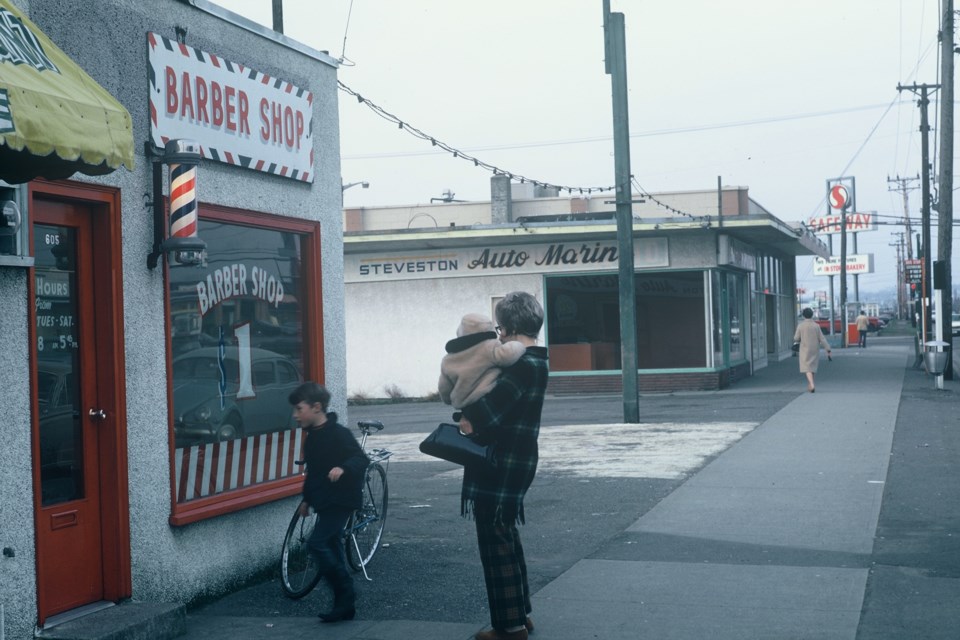Barbers have been around since time immemorial. Although their services have varied over the centuries, tending scalp and facial hair has remained a constant. Ancient writers tell us that some barber shops were like lounges, where men spent hours in tittle-tattle, gossiping with other customers and their barber. That, in fact, hasn’t changed drastically in the last two or three thousand years, because barbers are still known to be a garrulous sort.
In Ancient Rome the word for barber was “tonsor,” from the Latin “tondere,” meaning to shave, clip, shear. It survives in the English word tonsure, referring to the shaving of the top of a monk’s or priest’s head as he prepares to enter a religious order. The word barber, which comes to us by way of the Anglo-French “barbour,” can be traced to the Latin “barba,” meaning beard.
The Ancient Roman barber cut and curled hair, shaved beards and pared nails. His instruments included combs, mirrors, shears, curling irons, tweezers, knives (for nails) and razors shaped like half-moons. If he nicked a customer during shaving, he’d apply cobwebs to stop the bleeding.
By the Middle Ages, the barber was also expected to perform minor surgery, such as letting blood, setting broken bones, cutting corns, removing warts and pulling teeth. The pole striped in red, white and blue became the symbol of the barber’s profession, the red sometimes identified with blood, the white with bandages. A Renaissance manual for people employed by the Duke of Urbino states that in addition to carrying out his usual duties, the barber at court had to wash the hair of pageboys, and keep a supply of white and clean towels exclusively for the duke. Other requirements were that he be good looking and that he know how to hold his tongue – 500 years ago, rumours spread like wildfire even without social media networks.
Not only men but also women served as barbers in Ancient Rome. They were known as “tonstrices” (plural of “tonstrix,” female form of “tonsor”) and enjoyed a questionable reputation. According to one of Martial’s witty epigrams, the female barbers of Subura (a district of Rome) didn’t clip their customers, they skinned (in other words, robbed) them.
However, Louise, the female barber of Richmond, was in a completely different category. Louise started out by helping another Richmond barber, Walter Hoffman, whose shop was at 604 No. 3 Road (thanks to Richmond Archive’s Laura Fortier and John Campbell for finding this information on Facebook). She must have been very good at the job, because most of Walter’s customers asked to be served by her.
This didn’t sit well with Walter, and he fired Louise. She retaliated by renting quarters across the street, at 605 No. 3 Road, in the structure that housed Steveston Auto Marine. There she clipped fast, charging a mere dollar for her handiwork.
It’s etymologically appropriate that these two rivals should have had their businesses across the street from one another – rival (and rivalry) comes from the Latin “riva,” signifying a river bank. In ancient times, the most desirable properties were those on river banks, because rivers were key transportation routes. There would be stiff competition (rivalry) as the contenders (rivals) fought for control. No. 3 Road was like the river separating the two rival barbers.
As serious as the profession may be, there is something about the barber that lends itself to comedy. Just think of Mozart’s and Rossini’s operas about Figaro, the barber of Seville. It must have been the inherent comic element that inspired me to end my column with a limerick about Louise, the barber of Richmond.
That barber of Richmond, Louise,
Knew perfectly well how to please –
Snip, snip, and you’re done
For a dollar, just one –
While her rivals all suffered unease.
Sabine Eiche is a writer and art historian (www.sabinedellarovere.com)



